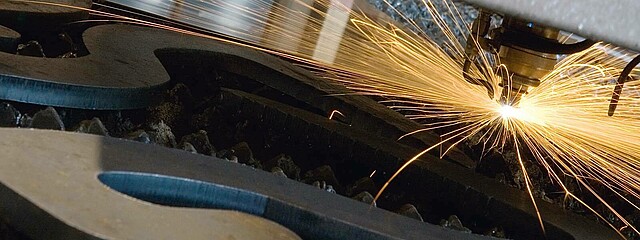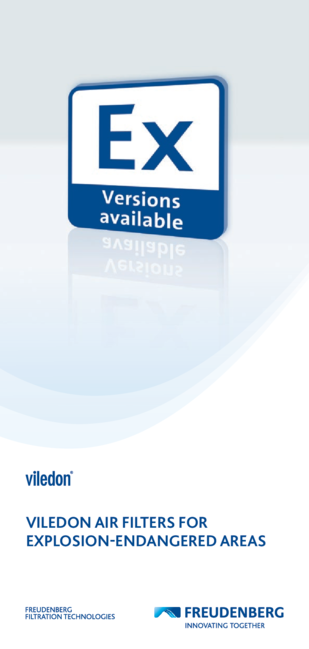ATEX-Directives
ATEX (French: ATmosphères Explosibles = explosive atmospheres) is a collective term and currently includes the two directives:
• ATEX Operating Directive 1999/92/EC
• ATEX Product Directive 2014/34/EU
The ATEX directives apply to operators of plants that have potentially explosive atmospheres. They are obliged to assess the explosion hazard of the plant, divide the plant into hazardous areas and record all measures taken to protect employees in their explosion protection document. In potentially explosive atmospheres, only equipment, components and protective systems that comply with the ATEX directives are permitted to be used. DEKRA is a certification body for equipment, components and protective systems used in potentially explosive atmospheres.
Contents
1. For which companies are the ATEX directives relevant?
2. For what purpose were the ATEX directives established?
3. Classification of potentially explosive atmospheres
4. Significance of the zone classification
5. What is the significance of the ATEX directives for filters and filter elements?
6. Viledon filters for potentially explosive atmospheres
For which companies are the ATEX directives relevant?
Explosion hazards affect all companies that store, transport or process flammable substances. These processes can generate gases, vapors, mists or dusts. If these come into contact with oxygen, an explosive atmosphere can develop. The ATEX directives are therefore relevant for various industrial sectors.
In the chemical industry, for example, flammable gases, liquids and solids are processed. Explosive mixtures can develop as a result. In energy-producing companies, explosive dust-air mixtures can also result from the handling of coal dusts. Many organic materials, such as wood, sugar, or grain, as well as a wide range of chemicals and light metals, can be combustible. When they are processed, combustible dust is produced as a by-product during milling, grinding or cutting. This dust has an extremely large surface area and can ignite or form an explosive mixture at the appropriate oxygen concentrations. The lower its minimum ignition energy (MIE), the higher the danger. In paint shops, overspray and escaping solvent vapors can pose a risk of creating an explosive atmosphere. The food industry is also affected by the ATEX directives, as explosive mixtures can be generated during the transport and storage of certain products.
For what purpose were the ATEX directives established?
Explosion protection is an important safety aspect in production facilities. Explosions can lead to serious personal injury or property damage. ATEX was established to protect the health and safety of workers and property in an explosive atmosphere. The directives oblige companies to minimize hazards in potentially explosive atmospheres.
Classification of potentially explosive atmospheres
To minimize risks, the ATEX directives require measures to be implemented in a defined sequence. In the case of primary explosion protection, the creation of an explosive atmosphere must be prevented. This includes, for example, replacing the explosive substance with a non-hazardous one or bringing it to a non-explosive state. Regular removal of dusts can also help to reduce the risk of explosion.
Secondary explosion protection is intended to prevent the ignition of hazardous explosive atmospheres if their formation cannot be avoided. Efficacious ignition sources such as electric arcs, sparks, flames or hot surfaces must be avoided in potentially explosive atmospheres.
If primary and secondary explosion protection are not sufficient, tertiary explosion protection applies. This is the case if neither the occurrence of an explosive atmosphere nor its ignition can be prevented. In this case, care must be taken to limit the consequences of an explosion to a non-hazardous level, for example by using pressure equalization devices or other constructive, securing measures.
Significance of the zone classification
Operators must divide areas with a potentially explosive atmosphere into zones. This determines the scope of the measures to be implemented, making it easier to select suitable equipment and ensure professional electrical installation. The division of potentially explosive atmospheres into zones takes into account the different risks posed by explosive atmospheres. Equipment used in that particular hazardous zone must meet the appropriate safety standards.
In the case of zones 20, 21 and 22, the focus is on atmospheres with combustible dusts.
| An explosive dust atmosphere is ... | … constantly, over long periods of time or frequently present. | … occasionally present during normal operation. | … not usually present during normal operation or only for a short time. |
| Zone | Zone 20 | Zone 21 | Zone 22 |
ATEX zones 0, 1 and 2 indicate atmospheres with flammable gases, vapors or mists.
Zone 0
Area in which a hazardous explosive atmosphere consisting of a mixture of air and flammable gases, vapors or mists is present continuously or for long periods.
Zone 1
Area in which it is possible that an explosive atmosphere may arise from a mixture of air with flammable gases, vapor or mist.
Zone 2
Area in which an explosive atmosphere consisting of a mixture of air with flammable gases, vapor or mist does not occur or only rarely occurs for a short time during normal operation.
What is the significance of the ATEX directives for filters and filter elements?
According to ATEX, products used in potentially explosive atmospheres must meet certain electrostatic properties. Dust and gases can cause an explosion if they come into contact with air or an ignition source. If the risk assessment reveals that an explosive mixture may occur in areas of the filter, products must be selected in accordance with the ATEX directives. Filters used in ATEX systems must also comply with these requirements. ATEX-compliant filters are an important component for effective explosion protection. No CE marking is required for filter elements, since they do not count as equipment in the sense of the ATEX directive. However, the safety requirements of explosion protection remain. Dust extraction systems covered by ATEX can only be operated with certain filter elements. ATEX products are not generally suitable for conductive dusts as well. Unlike systems with non-conductive dusts or fluff, the filter materials used here must in principle be electrically conductive.
Viledon filters for potentially explosive atmospheres
The ATEX directives ensure safety in potentially explosive atmospheres. The selection of suitable ATEX filters is an important protective measure for minimizing risks. Electrically conductive filter elements are tested for their discharge capability. The certified ATEX product range from Viledon offers a wide selection of different filter models for hazardous areas, while at the same time providing impressive efficiency. ATEX filters from Viledon ensure optimum filtration performance with maximum safety. In addition, all ATEX versions of Viledon air filters are certified by DEKRA to EN 60079-32-2:15 and DIN EN 54345-1 and thus meet the electrostatic requirements of ATEX zones. Viledon filter cartridges with electrically conductive equipment effectively separate explosive dusts. These filters can be used in all ATEX zones.
Freudenberg Filtration Technologies regularly has not only the medium but the entire filter element of each product group tested by the DEKRA testing institute. All ATEX filters offer filtration performance comparable to that of standard products. Manufacturer certificates of conformity are available for all ATEX products. The individual testing of each conductive filter element for conductivity ensures 100% control for maximum safety.












